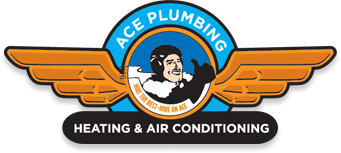Safeguard Your Home With A Backflow Preventer
 Homeowners in the Sacramento area often integrate a lawn sprinkler or other auxiliary water systems by connecting with a public water supply. This cross connection taps into non-potable water that can be contaminated. It can compromise the water quality if the proper backflow preventer is not utilized in the system.
Homeowners in the Sacramento area often integrate a lawn sprinkler or other auxiliary water systems by connecting with a public water supply. This cross connection taps into non-potable water that can be contaminated. It can compromise the water quality if the proper backflow preventer is not utilized in the system.
What is Backflow?
Backflow occurs when water in an auxiliary system—such as a lawn sprinkler, cooling, or other home plumbing system—is drawn back into to the home. This would likely occur when the flow of water into the home fails and no new water enters the system. As the pipes in the home are emptied of water, a siphon action would pull water back into the home from any pipes or systems outside the home.
What’s the Harm?
Water pipes associated with an irrigation or lawn sprinkling system are not sanitized after installation. The water in the system may have sat for days or weeks and become stale or picked up contamination from the sprinkler heads which may be in contact with the soil or vegetation. For these reasons, you don’t want the water that is sitting in the landscape pipes drawn back into the home. You need a backflow preventer or cross control connection system in place.
How a Backflow Preventer Works?
A check valve is commonly installed at the point the pipe serving the exterior system exits the house. A check valve is a mechanical valve that utilizes the pressure of the flowing water to control the actions of the valve ball or diaphragm. For example, the pressure of the water flowing out of the home and into the exterior system, holds the valve ball in the open position. When the water flow reverses, such as a backflow situation, the ball is pushed against the valve opening closing the valve.
Some check valves also utilize a spring loaded device to keep the valve closed in the absence of water flow in either direction. Depending on the application, this type of valve may provide more backflow security for the homeowner.
Check valves are commonly simple devices and do not include manual controls. An additional manual valve is often added to the line next to the check valve to provide the homeowner the option of shutting down the line as necessary.
Is it Important?
In a world where nothing ever failed, a backflow preventer would not be necessary. The continuous water pressure in the home would prevent contaminated water from external watering systems from entering the home.
But water system failures do occur and contaminated water in the home plumbing system can cause serious health problems and be expensive to remedy. The expert Ace plumbing team are certified to test, repair, and replace of backflow prevention devices in commercial and residential environments. We offer 24/7 emergency service, contact us today!



